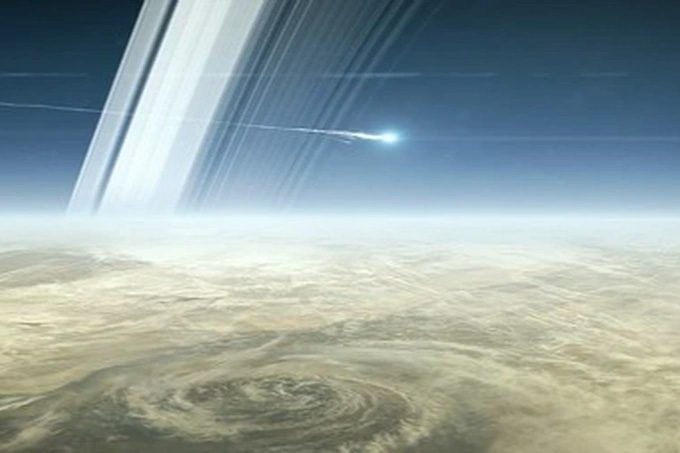How Does Rain Occur and What Forms Does It Take on the Planets in Our Solar System?
On Earth, we are quite familiar with a certain type of weather. For instance, rain consists of liquid water droplets that condense from water vapor in the atmosphere. However, on other planets where water is almost nonexistent, how does rain occur?
1. Diamond Rain
Diamonds, which are extremely valuable on Earth, are actually quite common on Saturn due to fascinating “diamond rain.” It is estimated that nearly 1,000 tons of diamonds fall to the surface of this planet in the form of “showers.”

Diamond rain originates from intense thunderstorms.
Not only Saturn, but similar rains also occur on Neptune and Jupiter. One study suggests that these rains result from intense thunderstorms, with an average of 10 lightning strikes per second.
The frequent lightning, combined with the extreme temperatures on these planets, causes methane molecules in the atmosphere to break apart, forming free-floating carbon in solid form, which then falls to the ground.
However, not all of this carbon transforms into diamonds. Scientists indicate that most of the carbon will turn into graphite as it moves through Saturn’s thick, layered atmosphere.
2. Scorching Acid Rain

The atmosphere of Venus is filled with sulfuric acid clouds.
Venus is the hottest planet in the solar system, with surface temperatures reaching up to 463.85 degrees Celsius. The atmospheric pressure on this planet is so high that it can easily crush solid materials, and the surface constantly witnesses volcanic activity.
Moreover, the atmosphere of Venus is also filled with sulfuric acid clouds that frequently rain down on the planet.
However, the extreme heat at the surface causes these acid rain droplets to quickly convert to vapor from a height of about 25 kilometers, where they linger.
3. Frigid Methane Rain

Saturn’s moon Titan has a unique methane cycle.
On Titan, Saturn’s largest moon, freezing methane rain occurs regularly at extremely low temperatures of about -179 degrees Celsius.
Similar to the water cycle on Earth, Titan has a distinct methane cycle. Liquid methane rains down into reservoirs and evaporates into clouds before starting a new cycle.
4. Dry Ice Snow Rain

The ideal conditions for this type of rain occur at temperatures below -125 degrees Celsius.
In 2012, data from NASA’s Mars Reconnaissance Orbiter provided scientists with evidence of carbon dioxide snow rain occurring on the Red Planet.
There, frozen carbon dioxide falls to the surface in solid chunks.
It is known that the ideal conditions for these rains occur at temperatures below -125 degrees Celsius, much colder than the freezing point of water on Earth, but quite common on the surface of Mars.
Unlike regular rain, these “showers” do not carry liquid water, hence they are referred to as “dry ice rain” or “dry snow rain.”
5. Helium Rain at Extremely High Pressure

Helium rain is quite common on gas giants.
While rain can be easily observed on rocky planets, what happens on gas giants?
In 2021, a report published in the journal Nature revealed evidence that helium rain occurs quite frequently on gas giants like Jupiter and Saturn.
This consists of droplets of liquid helium mixed with hydrogen and metallic liquids, occurring under special pressure conditions about 40,000 times that of Earth’s atmosphere.
6. Intense Plasma Rain

This rain originates from charged plasma flows.
The Sun, the brilliant star at the center of our galaxy, also experiences rain.
However, due to the Sun’s surface being hot to millions of degrees Celsius, water cannot evaporate or condense. Instead, this rain comes from charged plasma flows, shooting up into the Sun’s outer atmosphere.
Here, the plasma cools and condenses into thick gas masses before falling back to the Sun’s surface, creating intense “showers” called coronal rain.





















































